“This is the photography floor,” says Paul Reas, course director of documentary photography at the University of South Wales, Cardiff, as he ushers me into the department’s new home. Stepping out of the lift, we are greeted by a series of large-scale photographs suspended from the ceiling in black frames, hanging just in front of a large seating area where two students are working on laptops. They, and around 20 other third-year undergraduates, are preparing for their final degree show, less than two weeks away when I visit, staged at Seen Fifteen gallery in south London. There is an air of excitement and murmur of activity drifting around the department.
Passing the print room on the right, a couple of studios on the left, and a further two editing suites, we are joined by tutors Lisa Barnard, Colin Pantall and David Barnes in the conference room. It is only since last September that the Cardiff city centre building has housed the legendary ‘doc-phot’ course, after its relocation from the university’s Newport site 15 miles away, where it had been established some 43 years earlier. It marks a new beginning for the entire photography department after a few years of uncertainty following a 2013 merger with the Glamorgan Institute, triggered by order of the Welsh Assembly. This move saw some senior staff moving on, and the addition of new members headed up by Reas.
But that is only recent history. For over four decades, the documentary photography course has forged a reputation as one of the UK’s leading photography teaching destinations. In fact, the very first photography class can be dated back even further to 1912, when it was introduced by the head of the school of art at Newport Technical Institute. The course, however, was set up in 1973 by Magnum photographer David Hurn as a 12-month Training Opportunities Scheme to ‘re-skill’ miners and steelworkers.
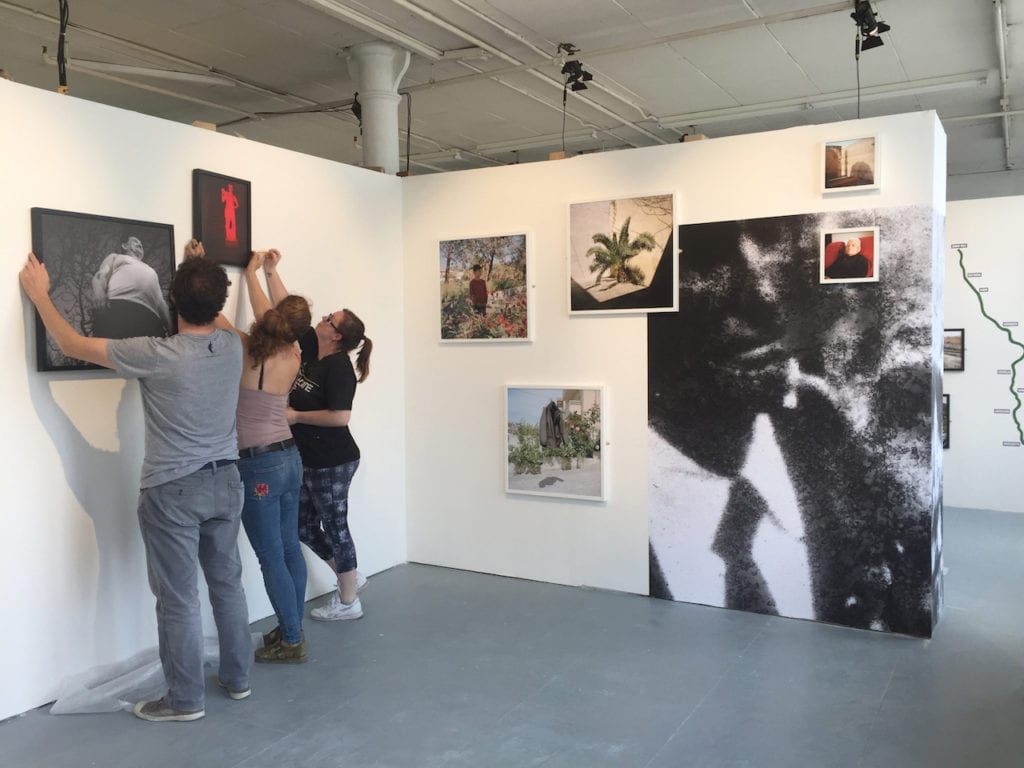
Students prepare for their graduation show at Seen Fifteen gallery in London © University of South Wales, Cardiff
Passing the print room on the right, a couple of studios on the left, and a further two editing suites, we are joined by tutors Lisa Barnard, Colin Pantall and David Barnes in the conference room. It is only since last September that the Cardiff city centre building has housed the legendary ‘doc-phot’ course, after its relocation from the university’s Newport site 15 miles away, where it had been established some 43 years earlier. It marks a new beginning for the entire photography department after a few years of uncertainty following a 2013 merger with the Glamorgan Institute, triggered by order of the Welsh Assembly. This move saw some senior staff moving on, and the addition of new members headed up by Reas.
But that is only recent history. For over four decades, the documentary photography course has forged a reputation as one of the UK’s leading photography teaching destinations. In fact, the very first photography class can be dated back even further to 1912, when it was introduced by the head of the school of art at Newport Technical Institute. The course, however, was set up in 1973 by Magnum photographer David Hurn as a 12-month Training Opportunities Scheme to ‘re-skill’ miners and steelworkers.

Two years later, the course changed to a full-time BTEC, and in 1981 into a Higher National Diploma. Hurn decided to leave to pursue his personal projects and was replaced as course leader by Daniel Meadows in 1987, the same year the course became a three-year accredited degree. In subsequent years, Paul Seawright (1992-2007) and Ken Grant (2007- 2013) headed the programme, before Reas took over. Today’s cohort of tutors, which also includes curator Russell Roberts and professor of photography Mark Durden, aim to create a “documentary school”, hoping to attract students to take the journey from BA all the way through to PhD. With more coherency between the years, says Lisa Barnard, who has recently taken over the MFA course, they can express the importance of long-term and in-depth study.
Maintaining the momentum of the course for nearly half a century has been a remarkable achievement. Inevitably, it has evolved to meet changing needs and practices, but some aspects have also been left untouched. The structure of the first year, for example, is modelled on the skills needed to create a picture narrative. Each component – the portrait, the establishment of an idea, and a location – forms the basis of one module, and is then expanded and practised in meticulous detail. This structure has remained “pretty much identical” since the start, says Reas.
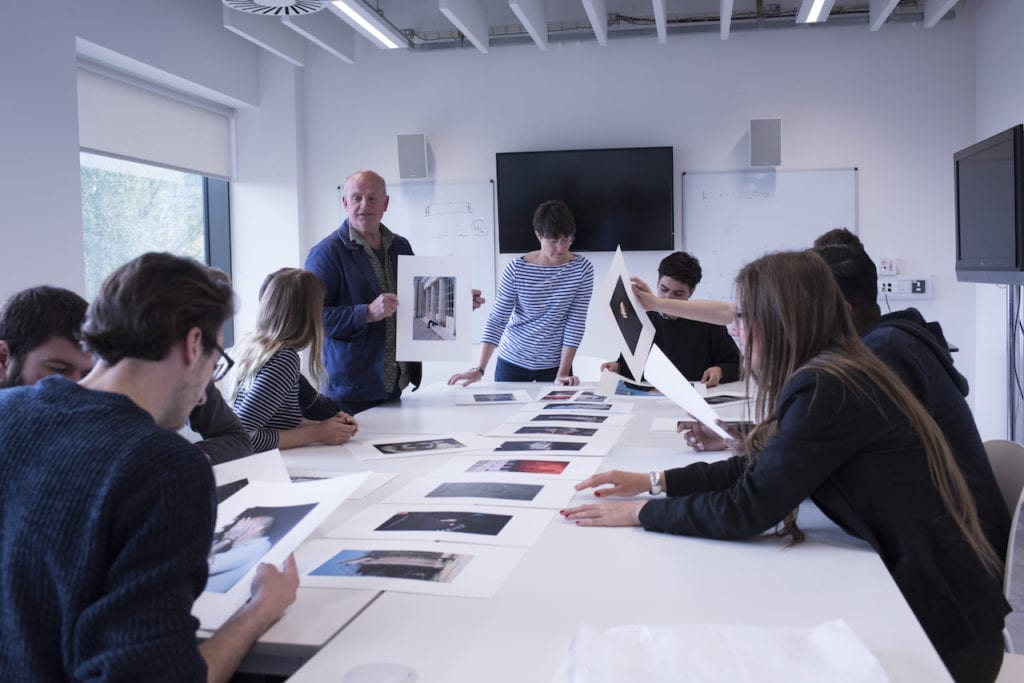
Paul Reas and Lisa Barnard (standing) during class © University of South Wales, Cardiff
“The kinds of challenges that it offers the students are technical, as they have to work in low-light situations, and social, because they have to get access to the subjects. Not only that, but students have to stay with their subjects over an extended period of time, so they’re developing communication skills and confidence as a result. They acquire what we call the ‘alphabet of the visual language’, to make pictures that clearly and unambiguously communicate what you’re thinking.”
As the expectations of emerging photographers have increased, so the course has evolved to train its students in the skills they need to begin a stimulating and profitable career. “We make them realise the importance of hard work – it’s not enough just to be a great picture-maker,” says Reas. “You have to understand the industry of pictures and how pictures get out there and how you tell those stories, and who you put those stories in front of to get them published. All of that takes a lot of work and you’ve got to be out there grafting.”
From the word go, the emphasis is placed on deadlines, punctuality and professionalism, and students have the opportunity to attend and participate in a host of extra-curricular events to encourage networking. Some of these are conferences chaired by visiting lecturers, and also talks held by PhD students, adding to the family feel of the doc-phot community. “There has been a natural evolution in the course,” says Reas.
“We have always been driven by the industry expectations of a photographer working within a documentary practice. And that’s definitely reflected in the kind of people that we recruit to teach, and some of the teaching methodologies as well.”
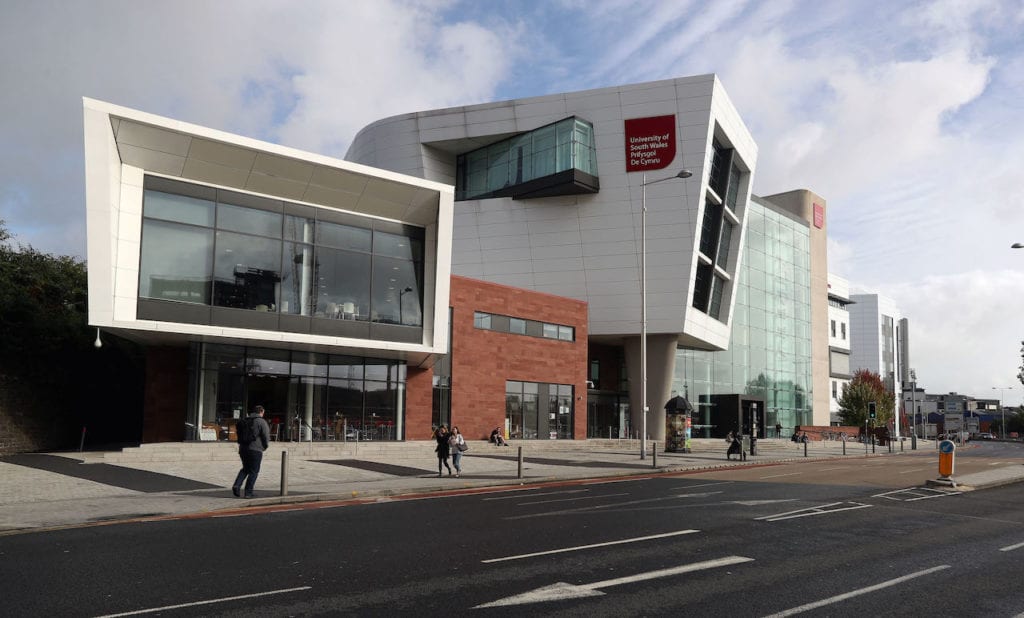
The new Cardiff campus of the University of South Wales © University of South Wales, Cardiff
“Wherever we feel like the industry is going, we try and bring in that zeitgeist,” says Barnard. “It’s not a stagnant course, it’s always moving and shifting; we’re always thinking about rewriting things.”
Maintaining the momentum of the course for nearly half a century has been a remarkable achievement. Inevitably, it has evolved to meet changing needs and practices, but some aspects have also been left untouched. The structure of the first year, for example, is modelled on the skills needed to create a picture narrative. Each component – the portrait, the establishment of an idea, and a location – forms the basis of one module, and is then expanded and practised in meticulous detail. This structure has remained “pretty much identical” since the start, says Reas.

“The kinds of challenges that it offers the students are technical, as they have to work in low-light situations, and social, because they have to get access to the subjects. Not only that, but students have to stay with their subjects over an extended period of time, so they’re developing communication skills and confidence as a result. They acquire what we call the ‘alphabet of the visual language’, to make pictures that clearly and unambiguously communicate what you’re thinking.”
As the expectations of emerging photographers have increased, so the course has evolved to train its students in the skills they need to begin a stimulating and profitable career. “We make them realise the importance of hard work – it’s not enough just to be a great picture-maker,” says Reas. “You have to understand the industry of pictures and how pictures get out there and how you tell those stories, and who you put those stories in front of to get them published. All of that takes a lot of work and you’ve got to be out there grafting.”
From the word go, the emphasis is placed on deadlines, punctuality and professionalism, and students have the opportunity to attend and participate in a host of extra-curricular events to encourage networking. Some of these are conferences chaired by visiting lecturers, and also talks held by PhD students, adding to the family feel of the doc-phot community. “There has been a natural evolution in the course,” says Reas.
“We have always been driven by the industry expectations of a photographer working within a documentary practice. And that’s definitely reflected in the kind of people that we recruit to teach, and some of the teaching methodologies as well.”

“Wherever we feel like the industry is going, we try and bring in that zeitgeist,” says Barnard. “It’s not a stagnant course, it’s always moving and shifting; we’re always thinking about rewriting things.”
But, as is the nature of finding stories to tell, teaching is not confined to the classroom. Reas explains that the “outward-facing” activities of the course are just as important, if not more so. Network Week, in the second year, is a tightly-packed programme of studio visits, gallery trips and excursions to photographic institutions, giving students an immediate boost to their contact list, exposure and a peek into the future.
Last year, the documentary course saw a rise in applications, despite the increase in fees and wider echo of budget cuts in education. However, classes remain deliberately small, with around 20 individuals per year group. “It’s about getting to know each student individually,” says Reas. “If you can’t tap into their psyche, and can’t motivate their individual interests and enthusiasms, you can’t feed them.”
“It’s a very complex thing,” adds David Barnes, a former student and now member of staff. “What we’re looking to do is to try and put together a group of students from quite a wide range of applicants that will create an interesting dynamic as a year together.”
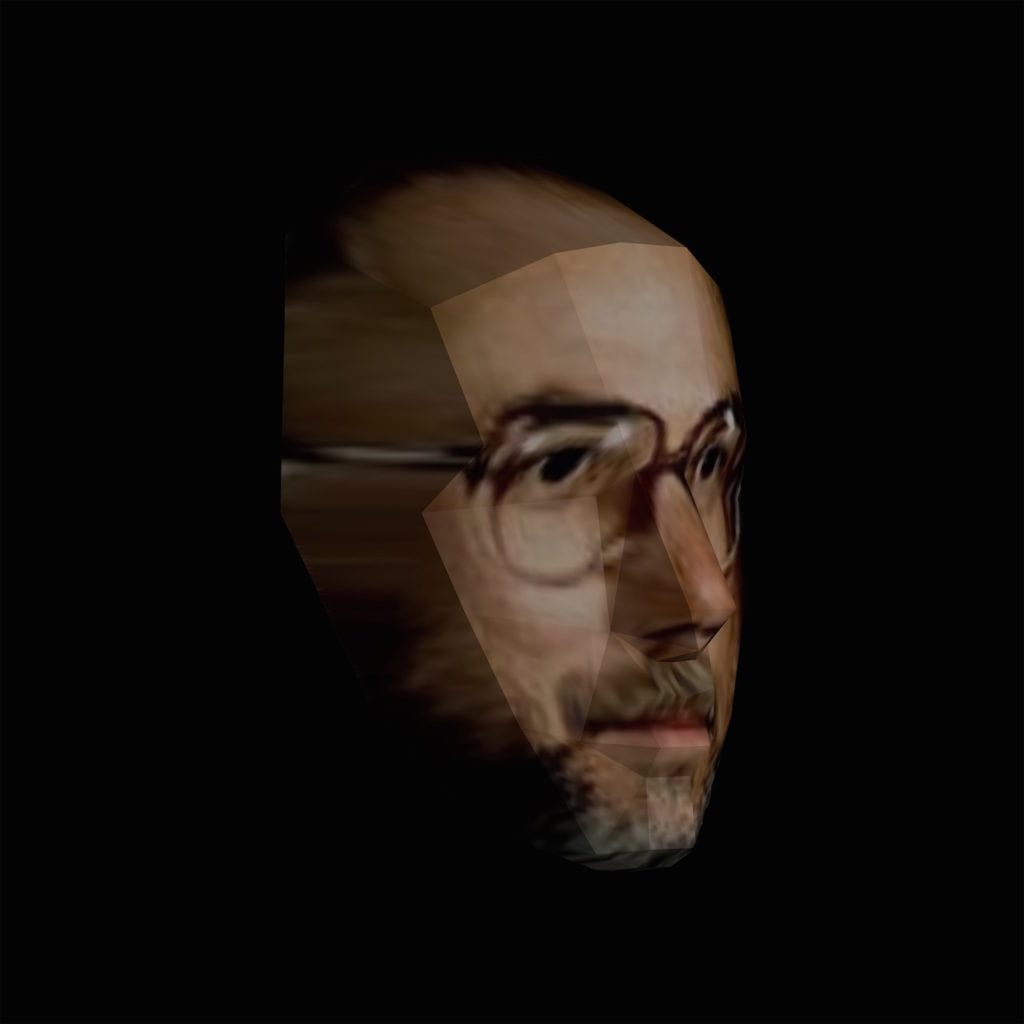
Dave Sanders, from the series Columbine © Louis Herron
Pantall adds that many of these individuals may also have had a negative learning experience thus far from their previous institutions, “and it’s about overcoming that. It’s a visual course and because of that, you might have 25 to 30 percent with some kind of reading difficulty or dyslexia, and that’s all part of the journey”.
Last year, the documentary course saw a rise in applications, despite the increase in fees and wider echo of budget cuts in education. However, classes remain deliberately small, with around 20 individuals per year group. “It’s about getting to know each student individually,” says Reas. “If you can’t tap into their psyche, and can’t motivate their individual interests and enthusiasms, you can’t feed them.”
“It’s a very complex thing,” adds David Barnes, a former student and now member of staff. “What we’re looking to do is to try and put together a group of students from quite a wide range of applicants that will create an interesting dynamic as a year together.”

Pantall adds that many of these individuals may also have had a negative learning experience thus far from their previous institutions, “and it’s about overcoming that. It’s a visual course and because of that, you might have 25 to 30 percent with some kind of reading difficulty or dyslexia, and that’s all part of the journey”.
“We are interested in people who are engaged with the world they live in, who have got particular points of view of that world and want to express it through the medium of photography,” says Reas. “Our role is to encourage that, stimulate that, to show students different ways of telling stories, to try to encourage them to make those stories more and more complex in the way that they tell them. But also to have ownership and authorship over the telling of that story.”
The course also incorporates theory, which BJP contributor Colin Pantall teaches. “It is often neglected. Theory sometimes seems like an add-on or slightly detached,” he says – though he adds that it’s now more embedded in the main curriculum, so that the concepts won’t be so abstract. Reas believes that there is a common misconception that the course tends towards straight documentary and photojournalism study, sticking to classic representations.
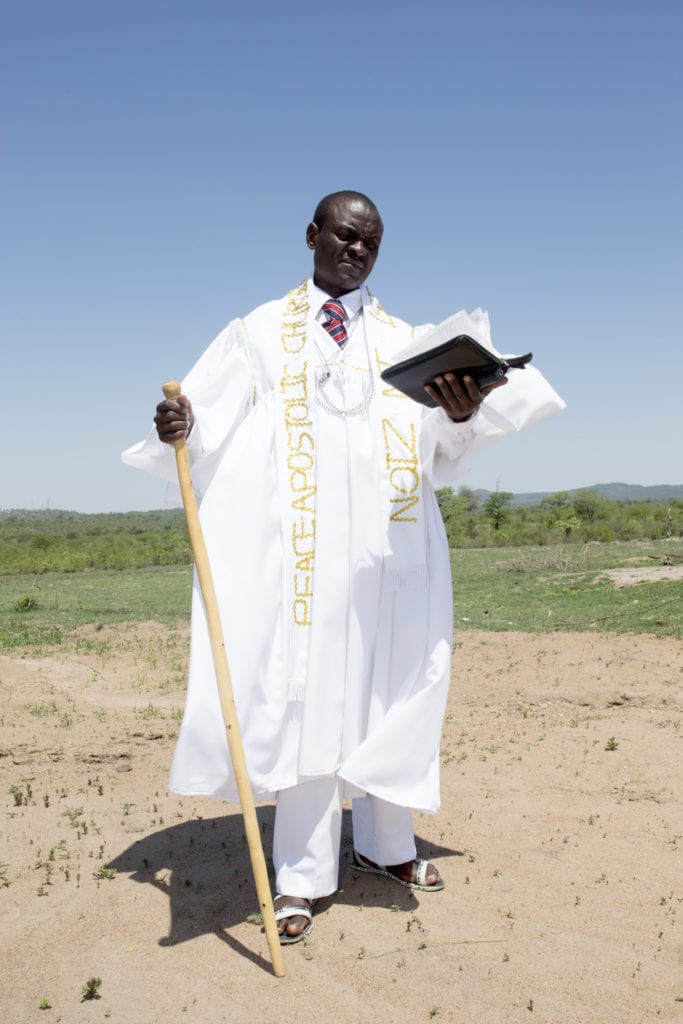
Prophet Solomon, from the series They Came From the Water While the World Watched © Giya Makondo-Wills
Barnes, who works extensively with photography and video in his own practice, explains that students are encouraged to experiment with various representations, such as moving image, audio, installation and data- and web-based projects. “I’m always asking them what the outcome of their work will be, whether it’s a book or a film or whatever,” he says.
“The world of photography has changed to such a degree that it’s no longer about going out and photographing things around you, although that’s part of it. The expectation now is that the students really know their subject.”
This, Barnes explains, often leads to tutorials and seminars that host discussions on ideas that surpass photography, be that history, culture, science or politics. “That’s a massive part of who we are as people,” he says – and crucial when it comes to their authority over a project, particularly presentations and portfolio reviews post-degree.
The course also incorporates theory, which BJP contributor Colin Pantall teaches. “It is often neglected. Theory sometimes seems like an add-on or slightly detached,” he says – though he adds that it’s now more embedded in the main curriculum, so that the concepts won’t be so abstract. Reas believes that there is a common misconception that the course tends towards straight documentary and photojournalism study, sticking to classic representations.

Barnes, who works extensively with photography and video in his own practice, explains that students are encouraged to experiment with various representations, such as moving image, audio, installation and data- and web-based projects. “I’m always asking them what the outcome of their work will be, whether it’s a book or a film or whatever,” he says.
“The world of photography has changed to such a degree that it’s no longer about going out and photographing things around you, although that’s part of it. The expectation now is that the students really know their subject.”
This, Barnes explains, often leads to tutorials and seminars that host discussions on ideas that surpass photography, be that history, culture, science or politics. “That’s a massive part of who we are as people,” he says – and crucial when it comes to their authority over a project, particularly presentations and portfolio reviews post-degree.
It has been over 40 years since the course began in the town of Newport, and although the relocation of the department to Cardiff has been positive, it was not broached without anxiety. “One of the reasons the course has succeeded in South Wales is the link with the community, and the way the community has received the students,” says Barnes. “I think that’s pivotal to the way that the course has worked.”
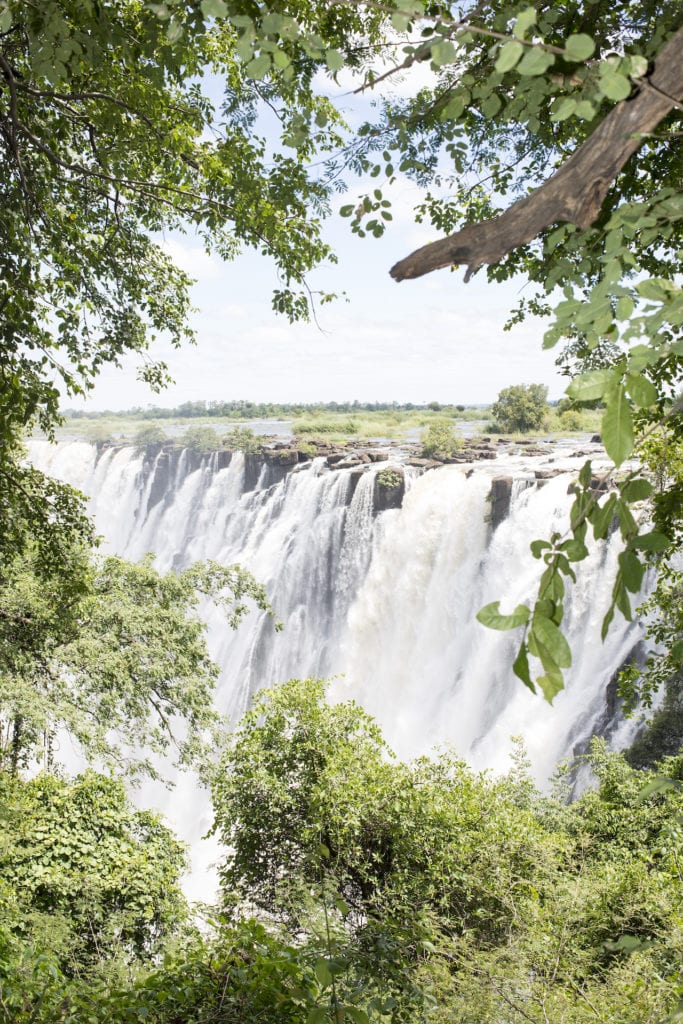
Victoria Falls, from the series Charaxes Imperialis © Isaac Blease
“Coming down from northern England, the one thing that struck me when I got off the train as a young student was how familiar it all felt to me,” he recalls. “Our students are known internationally in the photography world, but each and every one of them has made that initial knock on a factory door somewhere in the community.”
Nevertheless, they have been met with an equally warm reception from the Welsh capital, which perhaps offers more scope for the budding photographers. Then there are the tutors, all of whom are involved in personal projects while teaching at the university. “Everybody’s working in the industry,” says Barnard, whose Whiplash Transition was exhibited as part of a group show, The War From Here, at Krakow Photomonth. “It’s not just the reputation of the course, it’s the reputation of the individuals that make up the course. A lot of our students come because of that.”
Since 1973, staff have included Ron McCormick, John Charity, Clive Landen, Ian Walker, Paul Hill MBE, Pete Davis, Martin Parr, and a visiting Josef Koudelka. “What’s happening now is no different to what has always happened,” says Reas. “It’s always been a reflexive course, it’s always been responsive to changes in the industry, but that is because everyone who has ever taught here, first and foremost, has been a photographer.”
www.southwales.ac.uk This article was originally published in the August issue of BJP, which is available from www.thebjpshop.com

“Coming down from northern England, the one thing that struck me when I got off the train as a young student was how familiar it all felt to me,” he recalls. “Our students are known internationally in the photography world, but each and every one of them has made that initial knock on a factory door somewhere in the community.”
Nevertheless, they have been met with an equally warm reception from the Welsh capital, which perhaps offers more scope for the budding photographers. Then there are the tutors, all of whom are involved in personal projects while teaching at the university. “Everybody’s working in the industry,” says Barnard, whose Whiplash Transition was exhibited as part of a group show, The War From Here, at Krakow Photomonth. “It’s not just the reputation of the course, it’s the reputation of the individuals that make up the course. A lot of our students come because of that.”
Since 1973, staff have included Ron McCormick, John Charity, Clive Landen, Ian Walker, Paul Hill MBE, Pete Davis, Martin Parr, and a visiting Josef Koudelka. “What’s happening now is no different to what has always happened,” says Reas. “It’s always been a reflexive course, it’s always been responsive to changes in the industry, but that is because everyone who has ever taught here, first and foremost, has been a photographer.”
www.southwales.ac.uk This article was originally published in the August issue of BJP, which is available from www.thebjpshop.com

